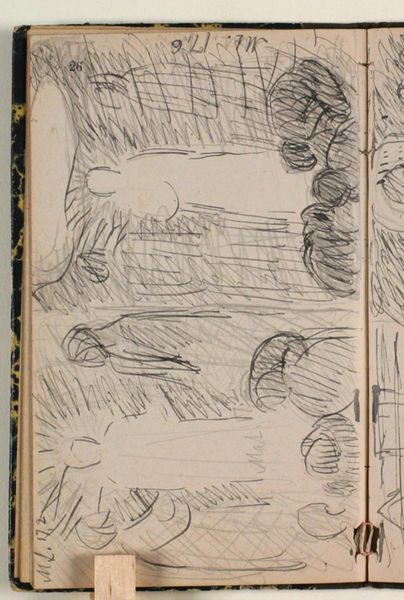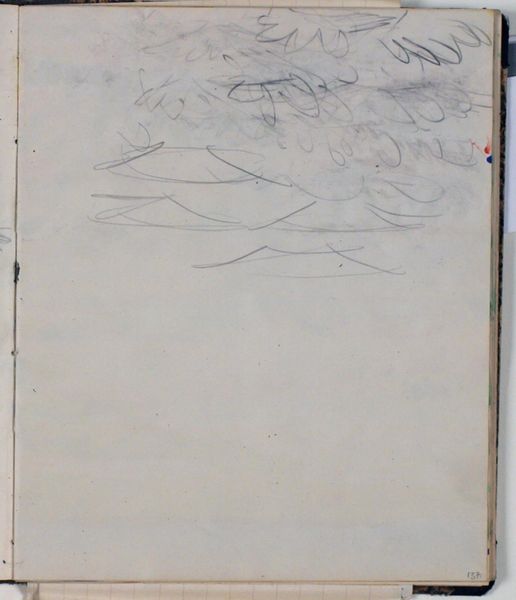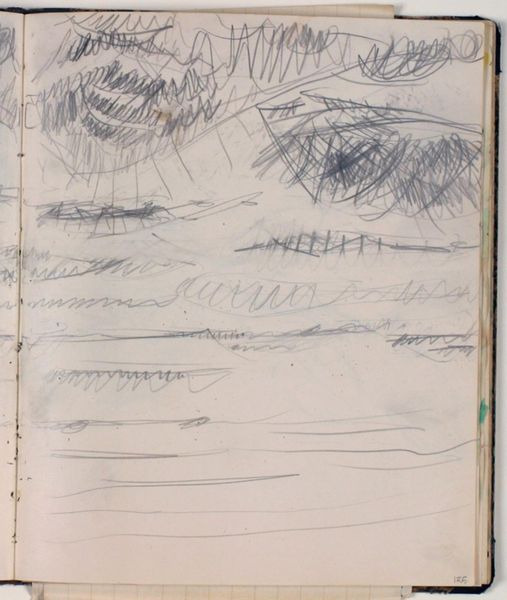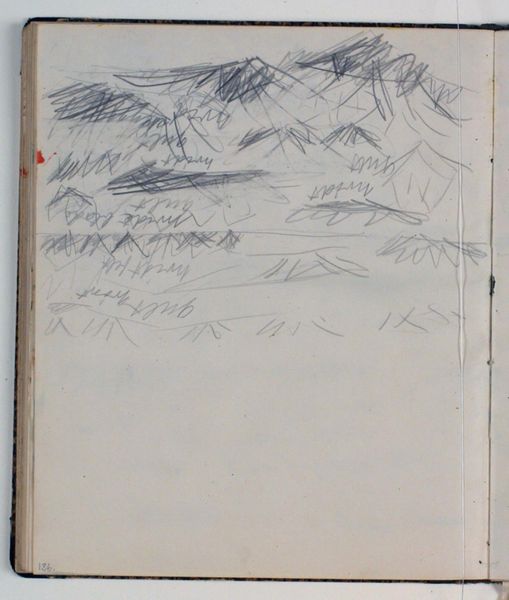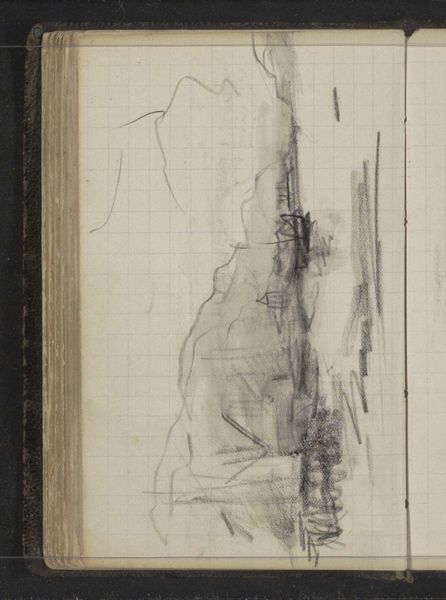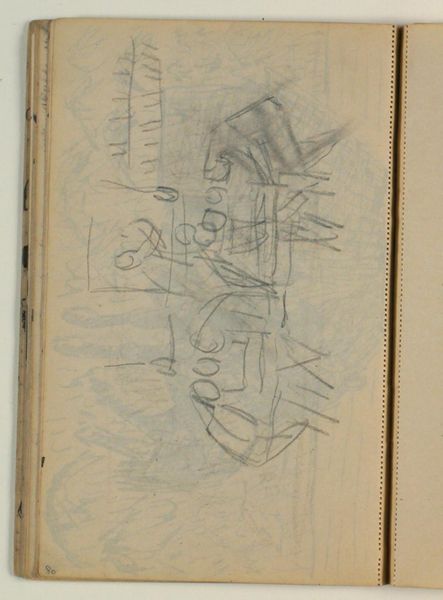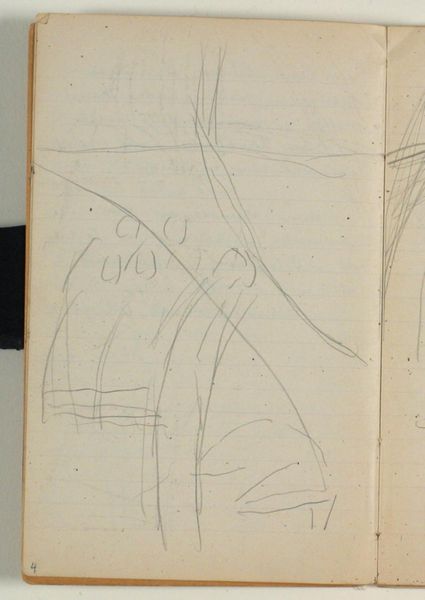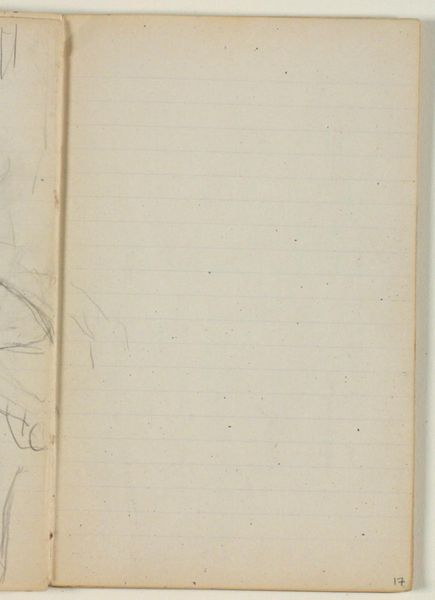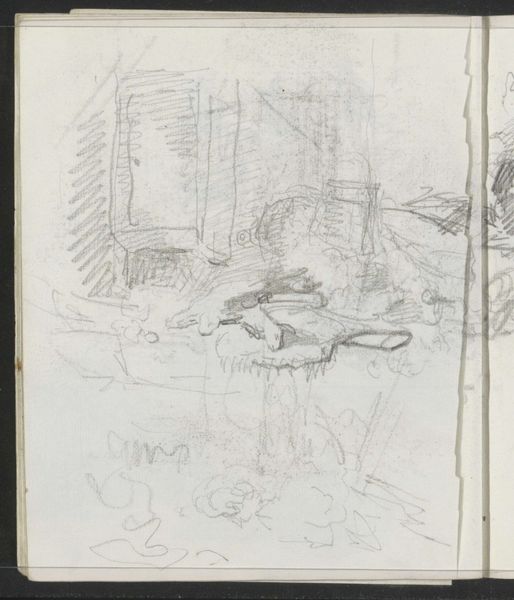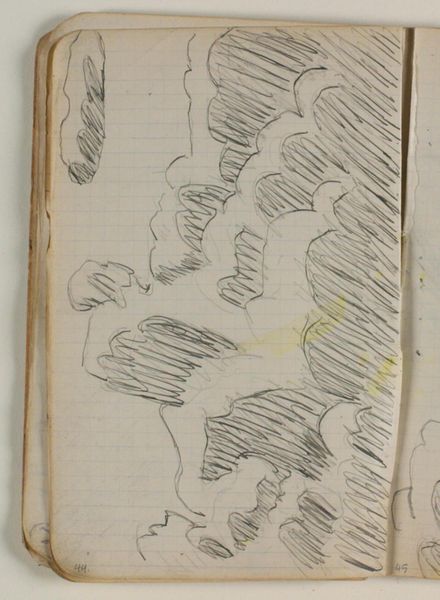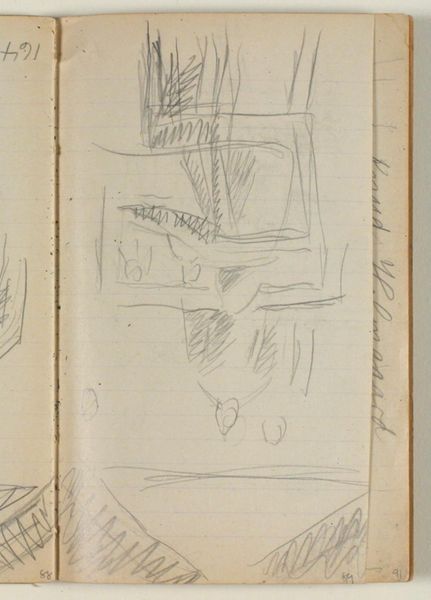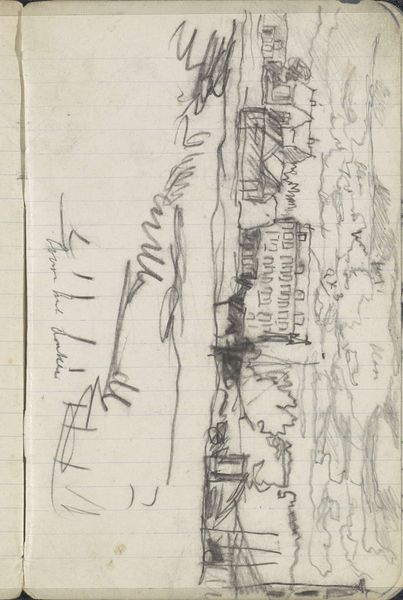
drawing, paper, pencil
#
drawing
#
paper
#
pencil
#
abstraction
#
line
Dimensions: 169 mm (height) x 109 mm (width) x 5 mm (depth) (monteringsmaal), 169 mm (height) x 109 mm (width) (bladmaal)
Curator: This intriguing drawing by Niels Larsen Stevns is, well, titled "Uidentificeret"—unidentified. Created between 1905 and 1907, it's a pencil sketch on paper currently held at the SMK, the National Gallery of Denmark. Editor: My first impression is organized chaos. Rows and rows of wiggly lines almost like abstract waves crashing across the page. There's a frenetic energy, despite the simple materials. Curator: It's a beautiful example of the artistic experimentation of the period. Stevns was grappling with the shift toward abstraction, a move away from strict representation, mirroring the broader cultural re-evaluation of societal structures. Editor: I see that. But beyond that context, I’m also drawn to the simplicity of the means: paper, pencil, a hand moving across the surface. What kind of paper, what hardness of lead? These are vital details for me. How immediate was that process? Was this rapid notation or painstaking refinement? Curator: These were likely preliminary studies, notes towards larger projects that served as a kind of resource from which he could then choose which one, if any, merited further pursuit and polishing in another media. Abstraction offered liberation, allowing him to capture essence rather than meticulously reproduce form. Editor: Right. But it is important to not underestimate the material labor involved, despite abstraction being associated with "higher" intellectual pursuit. It also makes me think of the labor movements happening concurrently with its creation. I wonder if that sort of urgency, change, made it into the lines as well. Curator: It is compelling to think about Stevns creating this work amid significant social and political changes. His mark is clearly reflective of those moments through material choice and the action of line. Editor: It’s that connection between thought and action—material transformed by labor—that makes the sketch more than just a historical artifact, isn’t it? Curator: Indeed, its power lies in encapsulating the artist's evolving vision and his connection to broader societal forces, don’t you think? Editor: Yes, precisely. It prompts you to reflect on materials, action, thought, and social consciousness within such humble confines.
Comments
No comments
Be the first to comment and join the conversation on the ultimate creative platform.
